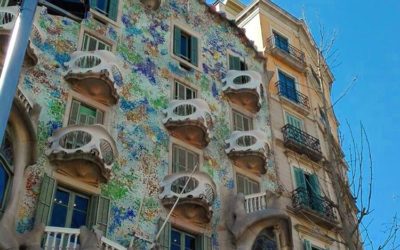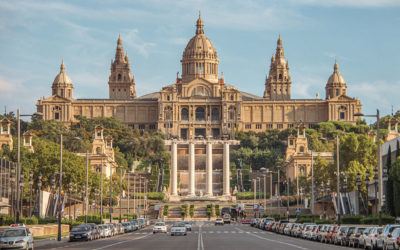Barcelona holds its position as a top European metropolitan center since it serves as the Spanish capital of Catalonia. Barcino represented the original foundation of the megacity built by Romans after they settled the area.
La Monumental
Situated at the Plaza de Toros Monumental de Barcelona the establishment operates under its familiar name as the Catalonian city’s most celebrated bullring. The historical landmark known as La Monumental represents a living archive of Catalonian cultural development while keeping past traditions alive according to Be Original Tours. Beyond its function as an attraction endpoint La Monumental stands as Barcelona’s essential historical and cultural site which draws tourist visits for understanding this significant piece of city heritage. The attraction remains undiscovered by many Barcelona visitors yet its viewing rewards the investment of time spent.
Built in 1914
La Monumental operated bullfights until 2011 while surviving every other bullring active in Catalonia but existed primarily for bullfighting and displaying Art Nouveau design and archeological reference. Its dual purpose included performance space and architectural recognition of Art Nouveau design principles. Thousands of colorful tiles create an intricate geometric pattern which defines La Monumental Moorish-inspired exterior. Visitors admire La Monumental as a wonderful spot for taking photos.
The architect Manuel Joaquim Raspall i Mayol conceived La Monumental after receiving the commission for “La Plaza de Sport.” Barcelona-born Raspall i Mayol stood as one of the leading urban designers during the early 20th century. The architectural work of Manuel Joaquim Raspall i Mayol deals with three main style components: Modernist, Art Nouveau and Noucentista (Catalan Art Nouveau) and Art Deco.
Other Uses for La Monumental
La Monumental has functioned as a venue for circus performances as well as musical concerts throughout its history including shows performed by the Beatles alongside Bob Marley and the Rolling Stones. The Catalan government approved a formal ban against bullfighting in 2010 allowing it to take effect in 2012.
American readers who love Ernest Hemingway’s works will experience a strong sense of recognition while viewing La Monumental thanks to his books “The Sun Also Rises” and “Death in the Afternoon.” Hemingway brought Americans into contact with traditional Spanish bullfighting through his writings while his Modernist style blended aptly with the avant-garde movements creating A Monumental architectural vision.
Visitors Today
At La Monumental visitors can travel through seating areas and observe bull stables before accessing the bullfighting ring. Any complete La Monumental experience requires inspecting the bullfighting museum located above the stables. The label content across museum exhibits uses multiple language choices including Spanish with French and German and English to support diverse visitors’ understanding. Historical bullfight posters at the museum attract modern visitors with their creative designs while the museum’s 18th century bullfighting costumes showcase its distinctive attractions.
At Gran Via de Les Corts Catalanes 749 La Monumental offers visitors easy access to see Sagrada Família Basilica which holds UNESCO World Heritage status. COMMUTERS who use Barcelona’s Metro service can reach La Monumental directly since the train stops right at this attraction and admission costs a modest six euros. Travelers should budget between one and an hour and a half dedicated to tour through La Monumental with its museum section. Shoppers can stop by the tiny gift store which exists within La Monumental.
The Gran Via
Visiting Gran Via serves as one of Barcelona’s top attractions because it represents the longest thoroughfare in Catalonia. Sagrada Familia joins La Monumental as significant sights along with the Noucentista Font de Diana Diana monument and the Plaça de les Glòries Catalanes square highlights its Encants Vells flea market and the University of Barcelona Plaza.
The commercial area of Gran Via attracts visitors through its multitude of shopping venues and theater performances as well as dining establishments that number in excess of two hundred. The 5-kilometer area surrounding La Monumental offers visitors access to the Picasso Museum alongside Aquarium Barcelona and Parc de la Ciutadella with its city zoo and tropical greenhouse as well as the sought-after night spot Opium. Nearly all visitors bypass La Monumental in their exploration of Barcelona yet this cultural gem reveals special elements from local history.
Table of Contents




